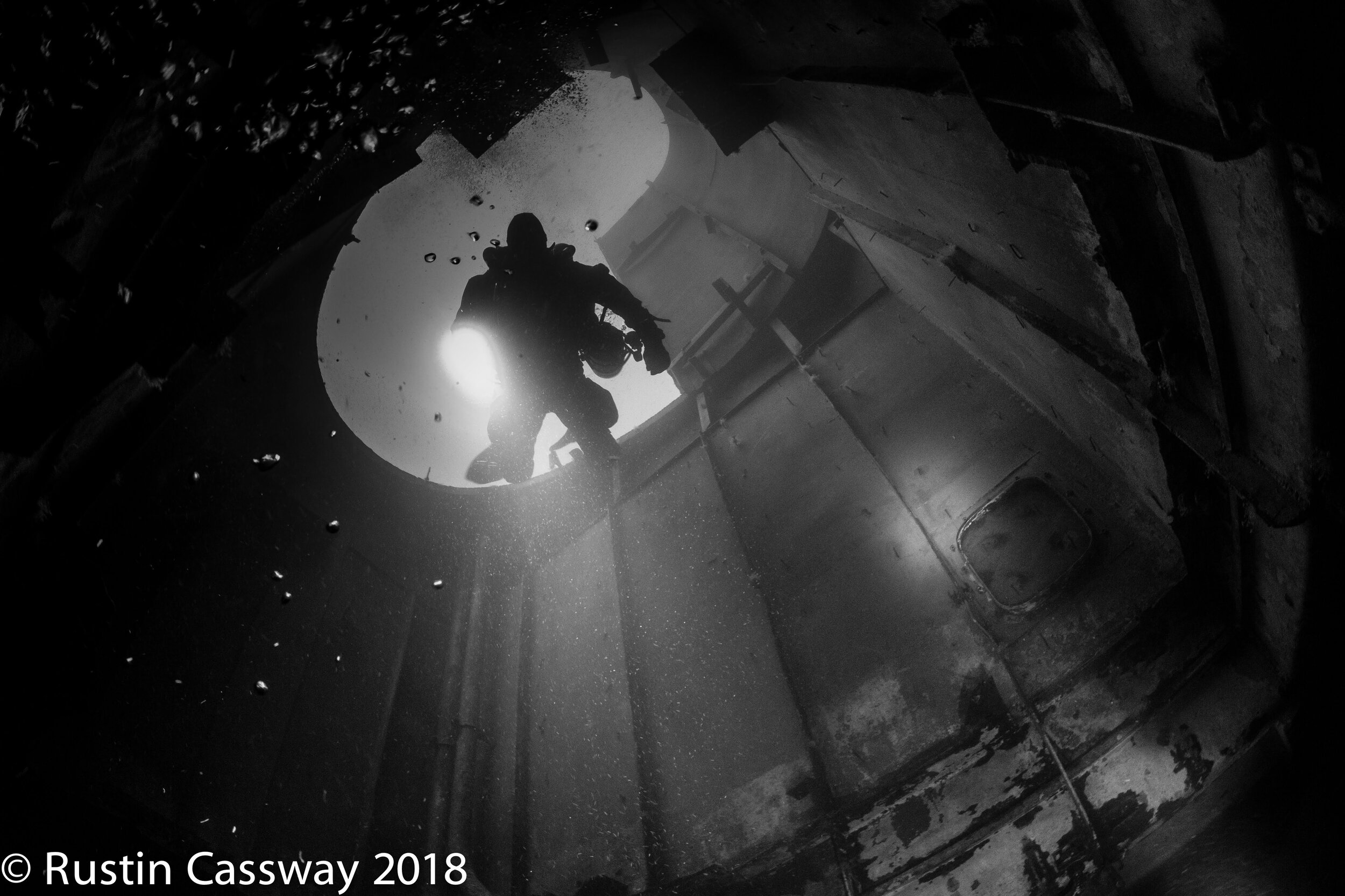
Enter the wild, exciting, and exotic world of Gary Gentile
About Gary
Enter the wild, exciting, and exotic world of Gary Gentile: author, lecturer, photographer, explorer, and deep-sea wreck-diver. Enter a world of adventure and thrills tempered by poetry and subtle beauty. Gary will take you to shipwrecks, show you marine life, and explore the great outdoors the way no one else can.
Gary has written 70 books, published more than 4,000 photographs, discovered more than 40 shipwrecks, and led a life of adventure.
Of the thousands of decompression dives that Gary has made, 200 of them were made on the Grand Dame of the Sea: the Andrea Doria. He was the first scuba diver to enter the First Class Dining Room, from which he recovered many items of elegant china. He also recovered and restored hundreds of items of jewelry and souvenirs from the Gift Shop, located at a depth of 220 feet. More important, he discovered and recovered a number of ceramic panels that once adorned the walls of the First Class Bar. These colorful panels were the work of famed Italian artist Romano Rui.
In the early 1990's, Gary was instrumental in merging mixed-gas diving technology with wreck-diving. His dive to the German battleship Ostfriesland, which lies at a depth of 380 feet, triggered an unprecedented expansion in the exploration of deep-water shipwrecks, and the advent of helium mixes as a breathing medium. He wrote the first book on technical diving. In 1994, he participated in a mixed-gas diving expedition to the Lusitania, which lies at a depth of 300 feet.
Gary has specialized in wreck-diving and shipwreck research, concentrating his efforts on wrecks along the eastern seaboard, from Newfoundland to Key West, and in the Great Lakes. He has compiled an extensive library of books, photographs, drawings, plans, and original source materials about ships and shipwrecks. He has conducted surveys on numerous wrecks, some of which have been drawn in the form of large-sized prints that are suitable for framing. He has either discovered or been the first to dive on scores of previously unknown shipwrecks.
Over the years he has rescued from the ravages of the sea many thousands of shipwreck artifacts, making him a leading authority in recovery techniques. He has gone to great lengths to preserve and restore these relics from the deep, and to display them to thousands of interested people: divers and nondivers alike. Throughout the years, these artifacts have been displayed at various museums, symposiums, and club-oriented exhibitions.
Gary has written scores of magazine articles, and has published thousands of photographs in books, periodicals, newspapers, brochures, advertisements, corporate reports, museum displays, postcards, film, and television. He lectures extensively on underwater topics, and conducts seminars on advanced wreck-diving techniques, high-tech diving equipment, and shipwreck photography.
His books are primarily novels of science fiction and adventure, and nonfiction volumes about wreck-diving, and nautical and shipwreck history. The Popular Dive Guide Series will eventually cover nearly every major shipwreck along the east coast of the United States.
There is also another side of Gary’s life: that of an outdoor adventurer. In this guise he has climbed rock and mountains, backpacked through country high and low, bivouacked in the snow, and paddled his canoe through rapids and down untamed wilderness rivers - often for weeks at a time. His longest trip lasted a month, when he and five companions paddled 380 miles down the George River in Labrador. For three weeks straight they did not encounter another human being, or see signs of civilization. Gary embraces total self-sufficiency in the wilderness.
He has captured on film all these wonderful outdoor adventures, as well as the splendor of nature’s colorful scenery. He has given photographic presentations to dive clubs, hiking clubs, canoe clubs, elder hostels, church groups, cub and boy scouts, power squadrons, Naval associations, Civil War societies, Masonic lodges, Mensa, corporate functions, scientific organizations, and many, many other groups too numerous to mention.
In 1989, after a five-year battle with the National Oceanic and Atmospheric Administration, Gary won a suit which forced the hostile government agency to issue a permit to him to dive on the USS Monitor, a “protected” National Marine Sanctuary. Media attention that was focused on Gary's triumphant victory resulted in nationwide coverage of his 1990 photographic expedition to the Civil War ironclad. Gary continues to fight for the right of access to all shipwreck sites.
Join now in this photographic extravaganza. See the beauty of nature under the waves; explore the interior of an armored cruiser; stand in awe of a warship’s turrets; dive wrecks from Nova Scotia to Florida and in the Great Lakes; learn how to save and show those precious, sea-tainted relics; sit in on workshops on advanced wreck-diving techniques, high-tech diving equipment, and shipwreck photography; take a tour of that renowned Italian passenger line that divers long to touch: the Andrea Doria. Through still photos and video, experience the Civil War ironclad Monitor as it used to lie on the sandy bottom before the engine and turret were salvaged, and learn about Gary’s long battle with NOAA, and the precedent-setting court decision which forced NOAA to make the wreck accessible to the public. See the remains of the
Lusitania in 300 feet of water, and learn how a complex mixed-gas wreck-dive is conducted. Sit in awe at nature’s rugged charm. All this and more awaits your pleasure.
Let Gary bring it all to you.

